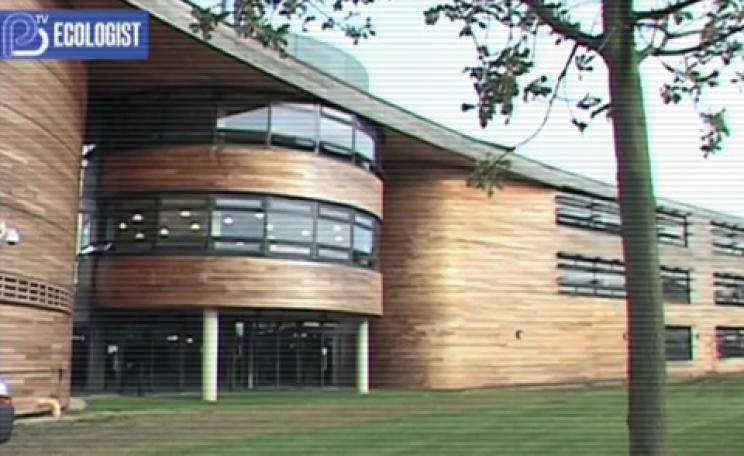Some of the students now think of horticulture as a career choice
The Amazing Places Project began in November 2012 as a simple horticultural project, with the aim of going into schools and community settings and getting kids interested in gardening - and making their local area look a bit nicer.
It seemed like it was going to fail within just a few weeks. No matter how interesting I tried to made it sound, no one seemed particularly interested in gardening around the mid-winter solstice. A month went by, the first monitoring forms were due in, and I hadn't worked with a single young person. And then it was Christmas.
I realised early on that a new approach was needed. I never really had a plan of what that would be. It kind of evolved as it went along. One of those situations where you think, "Why didn't I think of that to start with?"
Gardening was often impossible anyway due to the snow, but wildlife and the environment doesn't stop even on the coldest and iciest days! Finally invited in by one local school, I did a couple of classroom sessions about the local wildlife with some of their students with additional learning needs, and organised a trip to visit an urban farm in the historic village of Esholt, where Emmerdale was filmed up until 1998.
After spending the morning learning about how farming and wildlife can complement each other rather than clash, I hauled a large group of school kids, teachers and support staff to the local pub for lunch. Maybe this helped to kindle the teachers' enthusiasm. Because soon the school staff were well behind us and thoroughly inspired by what we were doing!
When spring finally arrived and we could start doing some actual gardening, the school offered us a large paved terrace on the roof, which we turned into a productive rooftop garden and communal area. We also created habitat that would encourage wildlife such as bees, butterflies and birds to visit and thrive. So soon we had real, living learning materials to bring our environmental education project to life.
Some more pleasing developments followed. I was working with a few different groups at this time: some mainstream classes and others with additional learning needs. Many of the students, of all abilities, found that gardening and horticulture was actually something they thrived at. Some even told me that they had started gardening at home and some were now thinking of horticulture as a career choice.
It seemed that I had somehow removed the idea that if something doesn't involve sitting in front of a computer, or sitting in a classroom, or going to meetings, it's not a 'proper' career. I had also shown that horticulture is a varied and highly skilled occupation with many avenues for progression - and that it is not something that you only choose if you are not the brightest daisy on the lawn!
I also persuaded support staff and teaching assistants to direct some of their students to horticultural courses at the local college, and so give them a chance of a meaningful career in an environment that they could thrive in. This included a number of children with more complex learning and behavioural needs.
Some of the students now think of horticulture as a career choice
The plan for the rooftop garden now is to use the produce in cookery lessons that teach about local, seasonal produce; reducing 'food-miles'; and the traditional recipes of the area in a cultural and historic context. When the nights get darker and longer, we also plan to hold astronomy evenings. So we now have plenty of ideas for learning activities suitable for the darker, colder months.
As time went on the project also attracted the attention of other schools and organisations and we worked with hundreds of students of all ages and abilities - from A* GCSE Citizenship students working on independent Active Citizenship projects, to 7 and 8 year olds growing strawberries, potatoes and flowers.
We are now going to let the project evolve further and introduce new elements, while continuing with all the themes the project is already known for.
* Amazing Places wants to expand beyond the confines of Bradford, taking its work to anywhere where people are interested. CONTACT: [email protected]
* Amazing Places has received funding from Community Space Challenge (CSC) and the Big Lottery Fund. It has operated out of the young persons' charity Bradford Youth Development Partnership (BYDP).
Barry Bennett is a qualified teacher who got interested in gardening and wildlife while recovering from a short illness and started to think about what kind of life he really wanted. He put his new interests and educational background together to become an environmental educator and run his own project - The Amazing Places Project.




